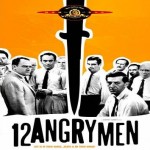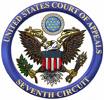A Case For Jury Nullification
 Jury nullification is a controversial issue in criminal law. There are undoubtedly many definitions of it, but it occurs most fundamentally when a jury acquits a defendant even when the letter of the law says that he or she committed a crime. Appearing at first blush as a theory for anarchists, it is a well-established power of the jury in criminal cases, pre-dating the United States Constitution.
Jury nullification is a controversial issue in criminal law. There are undoubtedly many definitions of it, but it occurs most fundamentally when a jury acquits a defendant even when the letter of the law says that he or she committed a crime. Appearing at first blush as a theory for anarchists, it is a well-established power of the jury in criminal cases, pre-dating the United States Constitution.
This article on the Fully Informed Jury Association website gives an example from America’s colonial days. In 1734, a printer named John Peter Zenger was arrested for committing libel against His Majesty’s government by publishing articles strongly critical of it. When brought to trial on the charges, he admitted what he had done, but argued he had an affirmative defense that what he printed was the truth and therefore that he should not be convicted. The judge instructed the jury that truth was no justification for libel, and that only the fact of the publications need be proved. Despite the judge’s instructions and Zenger’s confession, the jury acquitted Zenger. Clearly, the members of that jury opposed the Crown by engaging in nullification of the law before them. This opposition would eventually come to full fruition during the American Revolution.
The right for jurors to judge the law and not just the facts survived into American common law.

 If Congress makes an obvious error in drafting a statute, can a court correct that error by effectively adding something to the statute that is not there? Such was the interesting jurisprudential question the Seventh Circuit confronted last January in United States v. Head, 552 F.3d 640 (2009). Because of a mix-up with statutory cross-references, the statute that lists permissible conditions of supervised release in the federal system does not include assignment to a halfway house. However, the first seven circuits to consider the question held that sentencing judges could indeed order placement in a halfway house, reasoning that a literal interpretation of the statute would produce an absurdity. In Head, the Seventh Circuit bucked the trend and rejected the government’s absurdity argument. (My post on Head is
If Congress makes an obvious error in drafting a statute, can a court correct that error by effectively adding something to the statute that is not there? Such was the interesting jurisprudential question the Seventh Circuit confronted last January in United States v. Head, 552 F.3d 640 (2009). Because of a mix-up with statutory cross-references, the statute that lists permissible conditions of supervised release in the federal system does not include assignment to a halfway house. However, the first seven circuits to consider the question held that sentencing judges could indeed order placement in a halfway house, reasoning that a literal interpretation of the statute would produce an absurdity. In Head, the Seventh Circuit bucked the trend and rejected the government’s absurdity argument. (My post on Head is